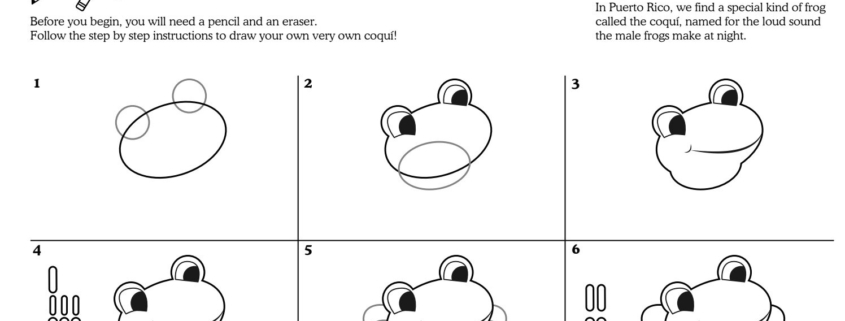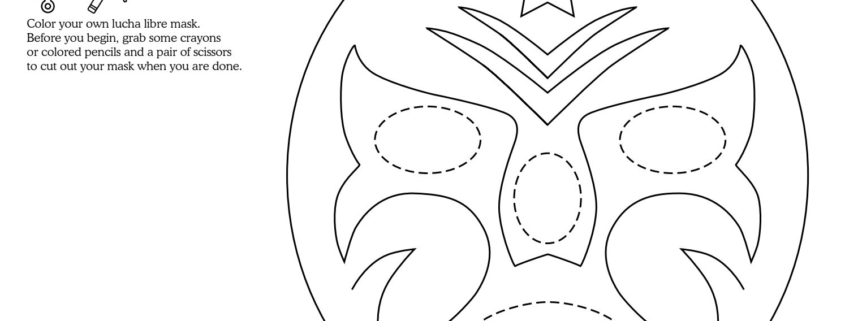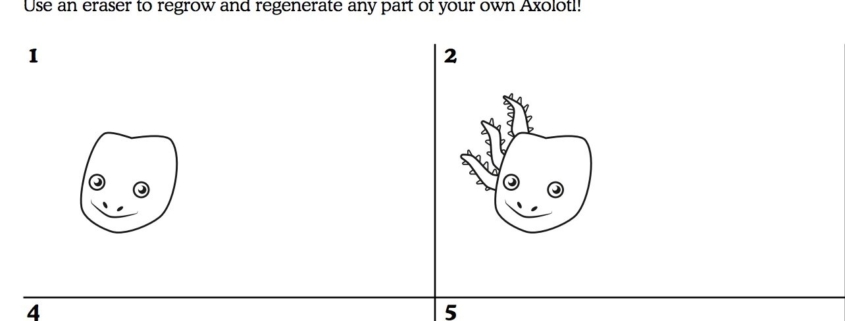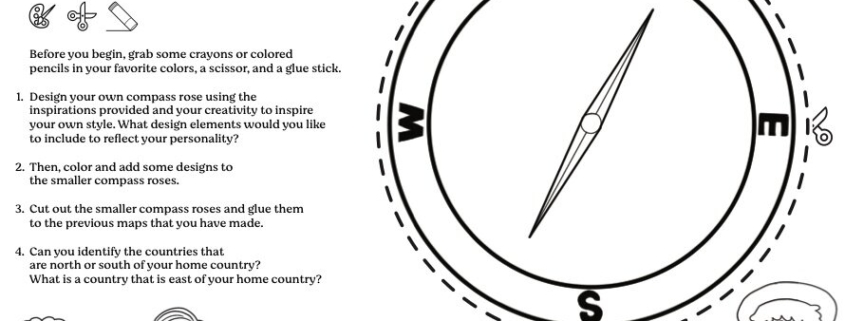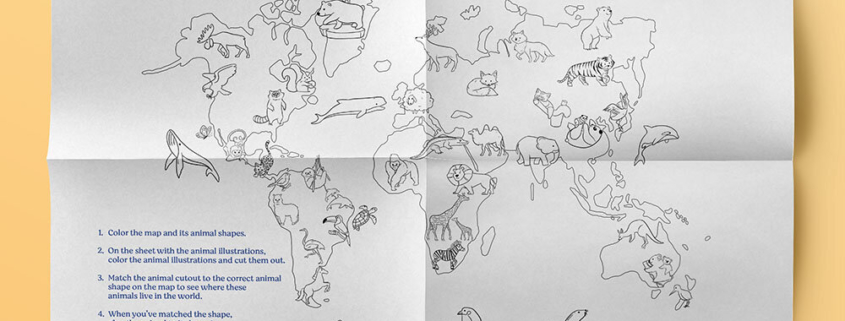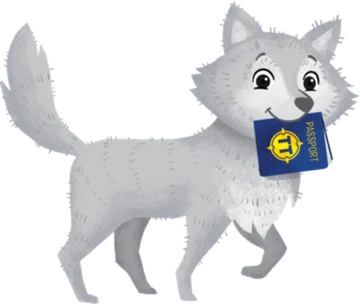In Puerto Rico, we find a special kind of frog called the coquí, pronounced ko-kee.
Coquís are named for the loud sound the male frogs make at night. Coquís are nocturnal, which means they are most active at night. During the day, they rest in the shade under logs and rocks. Coquís are carnivores, which is a fancy word for meat-eater. They like to eat other small critters like ants, crickets, moths, spiders, snails, smaller frogs, and even lizards!!
In today’s lesson, you will learn how to draw your own coquí! Before you begin, you will need a pencil, eraser, and colored pencils or crayons.
Coquís are one of the largest frog species found in Puerto Rico!
Coquís are a beloved symbol of Puerto Rico and the Taíno culture. Legends tell of a time when the island was inhabited by millions of coquís way before humans came to the island of Puerto Rico.
Many frog types have webbed feet but not coquís! Their scientific name (Eleutherodactylus) literally translates to “free toes.”
Coquís grow to be about one to two inches long. That’s the size of two quarters side by side. So tiny but so loud when they all sing at night in the jungles of El Yunque rainforest! Check out the clip to hear the sound the male coquís make at night!
